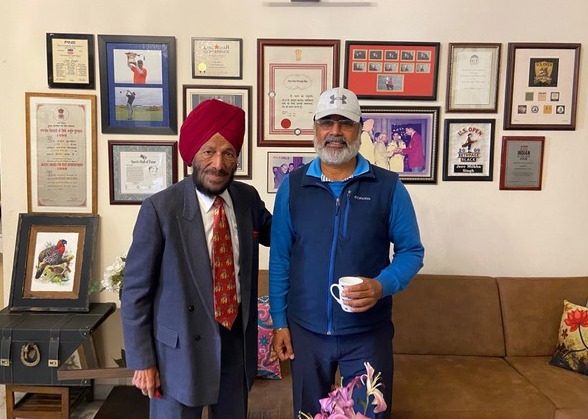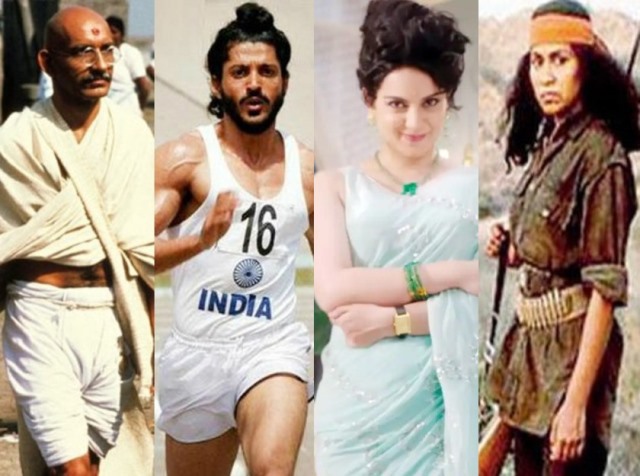Milkha Singh, the Flying Sikh, passed away at the age of 91 on night 18/19 July in City Beautiful due to the deadly pandemic COVID-19 whom he had been bravely fighting for the last few weeks. His wife Nirmal Milkha Singh, another accomplished sports person of India, who had led the Indian volleyball team in her younger days was also the victim of the same pandemic a week back. The legendary couple was the epitome of the spirit of Chandigarh which is a unique, young, vibrant and happening city. For the Tricity, passing away of a highly motivating couple almost simultaneously, marks an end of an era.
Milkha Singh rose to become an international sportsman and a legendary figure after overcoming lots of obstacles. He was a survivor of the violence that erupted after the partition in 1947 which engulfed his entire family. Determined to make it on his own, he joined the Indian Army as a soldier and his talent and potential was spotted by some vigilant eyes of the senior instructors who watched his stride when he ran in the platoon group as a recruit during morning and evening physical exercises. Rest was history. He was named as the Flying Sikh during the Common Wealth Games by the chief host of the games, General Ayub Khan, the President of Pakistan. He was the first Indian Athlete to have secured fourth position in an individual position in Olympics and the first four athletes broke the world record!
My tryst with Milkha Singh started as late as 2016 when I retired from the Indian Army and settled in the Tricity. I would meet him on the Chandigarh Golf Club at least once a week and greet him as was customary amongst the club members. Sometimes after playing the front nine holes, we would come across him in the restaurant before playing the return nine. I always found him to be warm, alert and inspiring. At so many occasions, I found him practising alone after or before a round. He walked fast and had an erect body, deceiving his 90 years of age.

On enumerable occasions, he would tell me, “General Sahib, I have great regards for the Indian Army who has given me everything from name to fame. I shall always remain indebted to the Indian Army.” This showed the depth of the character and humility that this great soul had. He has been a motivating factor for the youth of the country for decades till his very last moment.
When I told my wife Baljeet, for the first time, that I met Milkha Singh in the golf course, she was blown away and immediately dug out her old black and white sports album. She had played basketball for Punjab and represented the state at the nationals for seven times. There were pictures of her getting a prize from Milkha Singh. In another picture, she as the captain of the university team was introducing her team to the chief guest, Director of Sports, Milkha Singh. She recalled that Milkha Singh would always show up at their sports camps and was a favourite of all athletes. He would always be surrounded by the youngsters wanting to hear his anecdotes.
ALSO READ: Biopics — Real Life Stories Retold
A few months back we were sitting in the gazebo in the golf club when I greeted him. He asked me, “General Sahib, how do you spend your time after retirement besides playing golf?” I told him that I was working as a director with a cyber security company by the name of TAC Security which was founded by Trishneet Arora, a school dropout at the age of 19. He was quite intrigued and asked me how exactly we operated. I told him that we penetrate and test applications, with the prior permission of the owner or the company, for any vulnerabilities; and once we find them, we plug them. He was so inquisitive and interested at the age of 90 because he always wanted to remain relevant and upgraded his knowledge to be able to communicate with the younger generation.
Some weeks later, I again bumped into him and we got into a conversation which I always cherished. I told him that we had started a new subsidiary company to cover sports events which was called “Liberal Sports.” I quickly added that we had done features on Yuvraj and Rannvijay and he will be the next sportsman to be interviewed by the company. He immediately told me, “Anything for the Indian Army”.
Shortly thereafter, we got in touch with his manager and were invited to his house at 2 PM. I made it a point to emphasise to the media team that they couldn’t be late. Therefore, we collected them at 1 PM at the golf course and we reached his home and rang the bell exactly at 2 PM. Milkha Singha was immaculately dressed and sitting at the dining table with his wife. He was impressed that we were dot on time and took me to the two walls where I saw some rare pictures of his with very prominent national and international persons.

The photograph that appealed to me most was that of the trio, Dhyan Chand, Milkha Singh and Dara Singh. We were offered steaming hot coffee on a cold day and the interview would, probably, be the last one of the legendary athlete.
India has contemporary athletes who have achieved much greater heights but Milkha Singh would always remain a ray of hope and a beacon for all budding sportsmen of the country for decades to come. I am reminded of the quote used by Mac Arthur the junior, “old soldiers never die, they just fade away”. Milkha Singh may fade away as an old soldier, but his achievements in sports field will forever continue to motivate young India.

